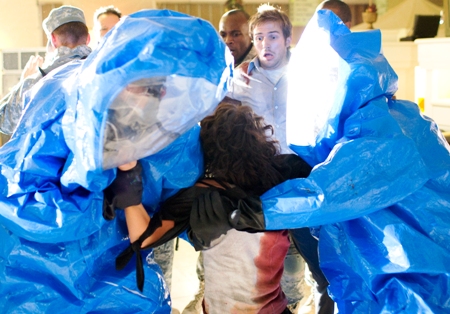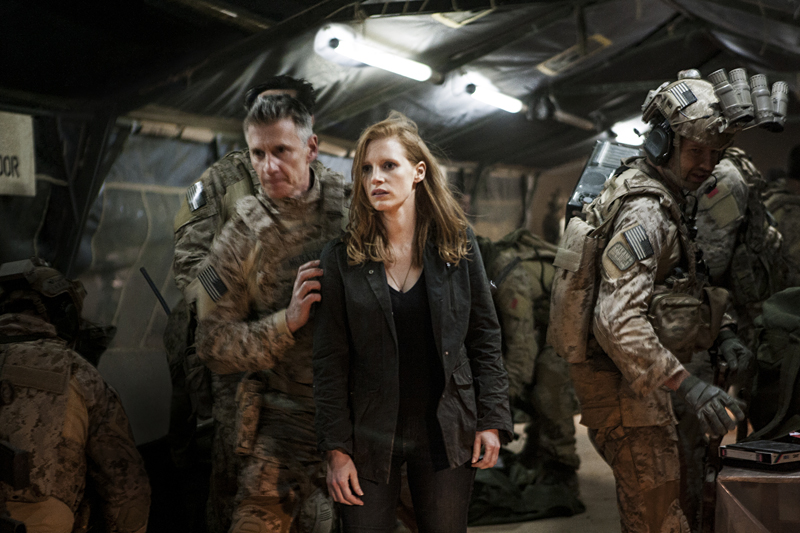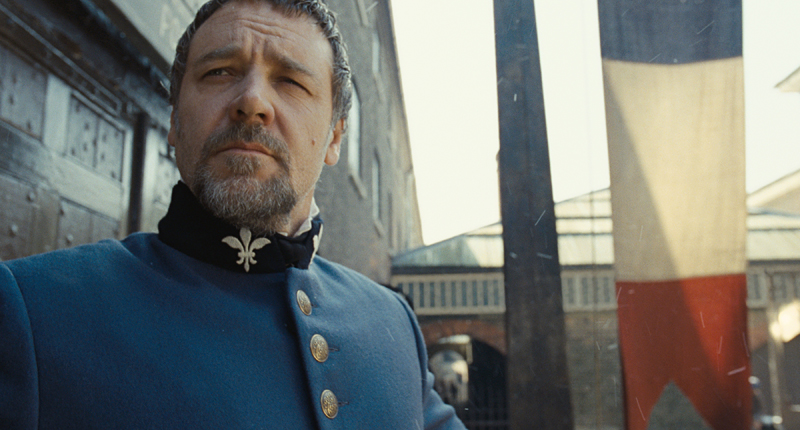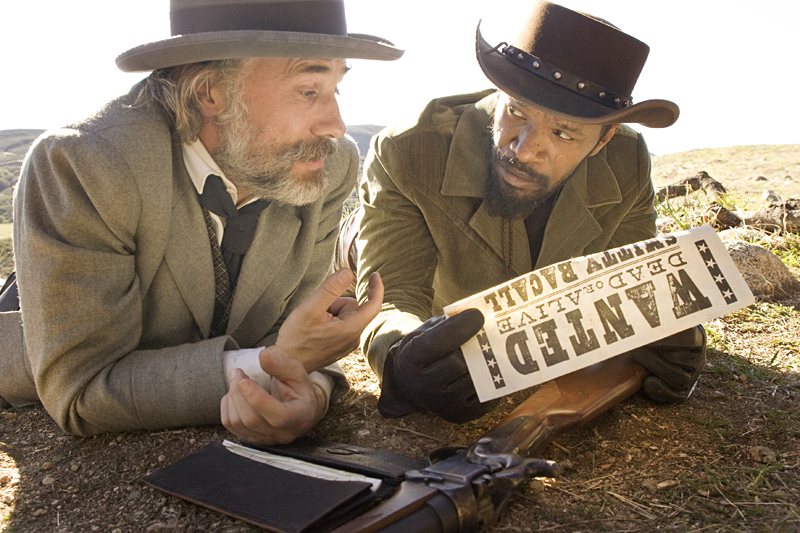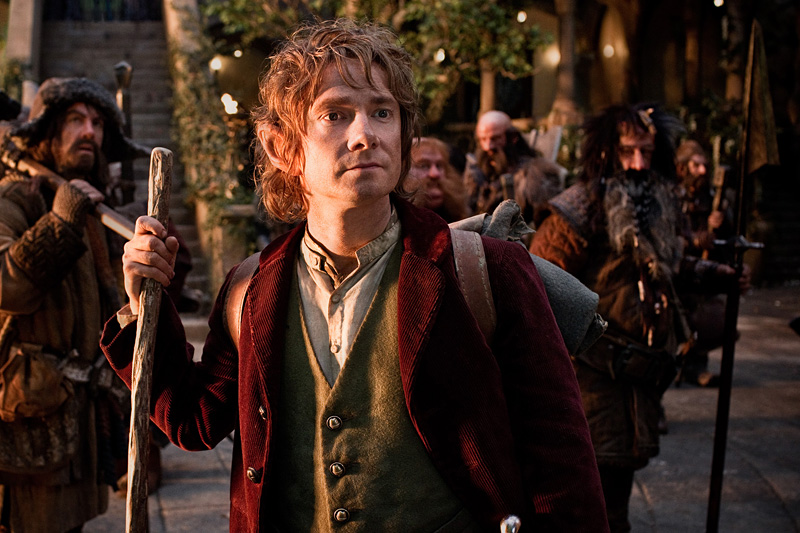It took nine years for Godzilla to rise up out of the ashes of Hiroshima and wreak his destruction on the good people of Tokyo in 1954. Here in America, it’s taken just over six years for the idea of an escapist disaster movie set on the streets of New York City to go from pop-culture anathema to hotly-anticipated commercial commodity. Back in 2001, movie companies were rushing to cut images of the World Trade Center from movies like Men in Black II and People I Know. In 2008, a decapitated Statue of Liberty has become the primary marketing iconography for the movie that is “tracking” to be the year’s first bonafide blockbuster. (In other words, it’ll likely be the most popular American movie since National Treasure 2 and Alvin and the Chipmunks.) Big Apple landmarks blown to smithereens and opaque clouds of debris swirling through the streets of lower Manhattan: How totally awesome is that!
Well, while the entertainment value of Cloverfield is highly negotiable, it’s clear that Abrams has consciously aligned himself with those filmmakers—George Romero, Steven Spielberg—who have used the template of a grade-B monster/invasion movie as a stealth vessel for social commentary. And I’d bet good money that Abrams also saw—or at least read about—South Korean director Bong Joon-ho’s marvelous 2006 film The Host, in which a mutant sea-creature weaned on the American military’s toxic waste climbs on to dry land and spawns massive homeland insecurity. But where those filmmakers all had something meaningful to say about the state of the world and, moreover, about human nature, Abrams doesn’t have much to say about anything, even though his characters do their fair share of blathering.
In fact, the cheap and opportunistic Cloverfield suggests nothing so much as an earlier Abrams-authored disasterpiece, Armageddon, if it were rewritten by Mumblecore doyen Andrew Bujalski and shot on The Blair Witch Project’s Dramamine-resistant handycam. The movie begins with an interminable party sequence not unlike the one in Bujalski’s Mutual Appreciation, minus the endearingly hapless characters and absurdist brio. It’s a going-away fete for Rob (Michael Stahl-David), an upwardly-mobile twentysomething about to leave New York for a VP job at the Tokyo office of some unnamed multinational, and it’s the conceit of Cloverfield that we see the teary-eyed farewells— along with everything else that follows—through the lens of a video camera wielded by Rob’s goofball friend Hud (T.J. Miller). Never did I think I would so pine for the more mildly assaulting aesthetics of The Diving Bell and the Butterfly.
Whiplash-inducing pans and tilts, herky-jerky zooms and random jump cuts are the order of the day here, goosed by the occasional “flashback”—supposedly the video footage Hud is inadvertently recording over—to Rob’s month-old fling with the comely Beth (Odette Yustman). And unlike a series of recent films (including Brian De Palma’s Redacted and Romero’s forthcoming Diary of the Dead) that use subjective cameras as a way of questioning our YouTube’d universe and the trust we put in recorded images, Abrams and Reeves jerk and swish the camera around with little rhyme or reason. It’s just another salable gimmick in a movie whose closest kinship to Blair Witch (a genuinely innovative and terrifying work of experimental cinema) may be the genius of its ad campaign.
Finally, somewhere around reel two—and bear in mind that Cloverfield runs all of 72 minutes, not counting its excruciatingly elongated end credits—il mostro makes his belated appearance, shooting fireballs over the skyline and downing the Brooklyn Bridge (again? So soon after I Am Legend?) with one swoop of his scaly tail. Beyond that, Abrams and Reeves forestall a full-body reveal until quite late—along with one wonderfully topsy-turvy effects shot of a sideways-leaning skyscraper, one of the film’s only genuinely clever visual ideas.
Alas, it’s the Cloverfield screenplay that seems to be out on strike. The plot effectively reduces down to one long slog from Spring Street to Central Park South, as Rob, his brother Jason (Mike Vogel), Hud and two other friends defy all conventional wisdom (as in, get on the next military chopper the hell out of there) and attempt to rescue the trapped Beth from her Columbus Circle apartment. (“Forget about the world and hang on to those people you love the most,” a sage Jason—evidently one of the alarming number of Americans who lack a passport—advises Rob just before disaster strikes.) That’s the kind of juvenile hero fantasy that got some gullible characters in Frank Darabont’s measurably more intelligent man-versus-beast melodrama The Mist picked off early by some very unfriendly tentacles. In the case of Cloverfield, not soon enough.
